
The town of Sergiev Posad (74 km to the north-east from Moscow) is lovely provincial town whose life is centered around the well-known monastery whose overwhelming panoramic view you can see from the Pancake Hill driving to Sergiev Posad from Moscow. The town was named in honour of St. Sergius who was born in the neighboring town of Radonezh and founded of the Trinity Monastery that is now known as the Holy Trinity Sergius Laura, spiritual center of the Russian Orthodox Church, one of the main destinations of Christian pilgrimage and one of the greatest attractions for tourists. Architectural ensemble of the Trinity-Sergius Laura (XV-XIX cc.) reflects all periods of Russian architecture development. The Trinity Cathedral, the major church of the monastery has unique iconostasis of Andrei Rublev. The Dormition Cathedral is a sepulcher of the Russian patriarchs. The Trinity-Sergius Laura is functioning monastery (about 200 monks). The Ecclesiastical Academy is located on its grounds. You have a chance to stand a service at one of churches open to public and to listen to one of the best choirs of Russia.
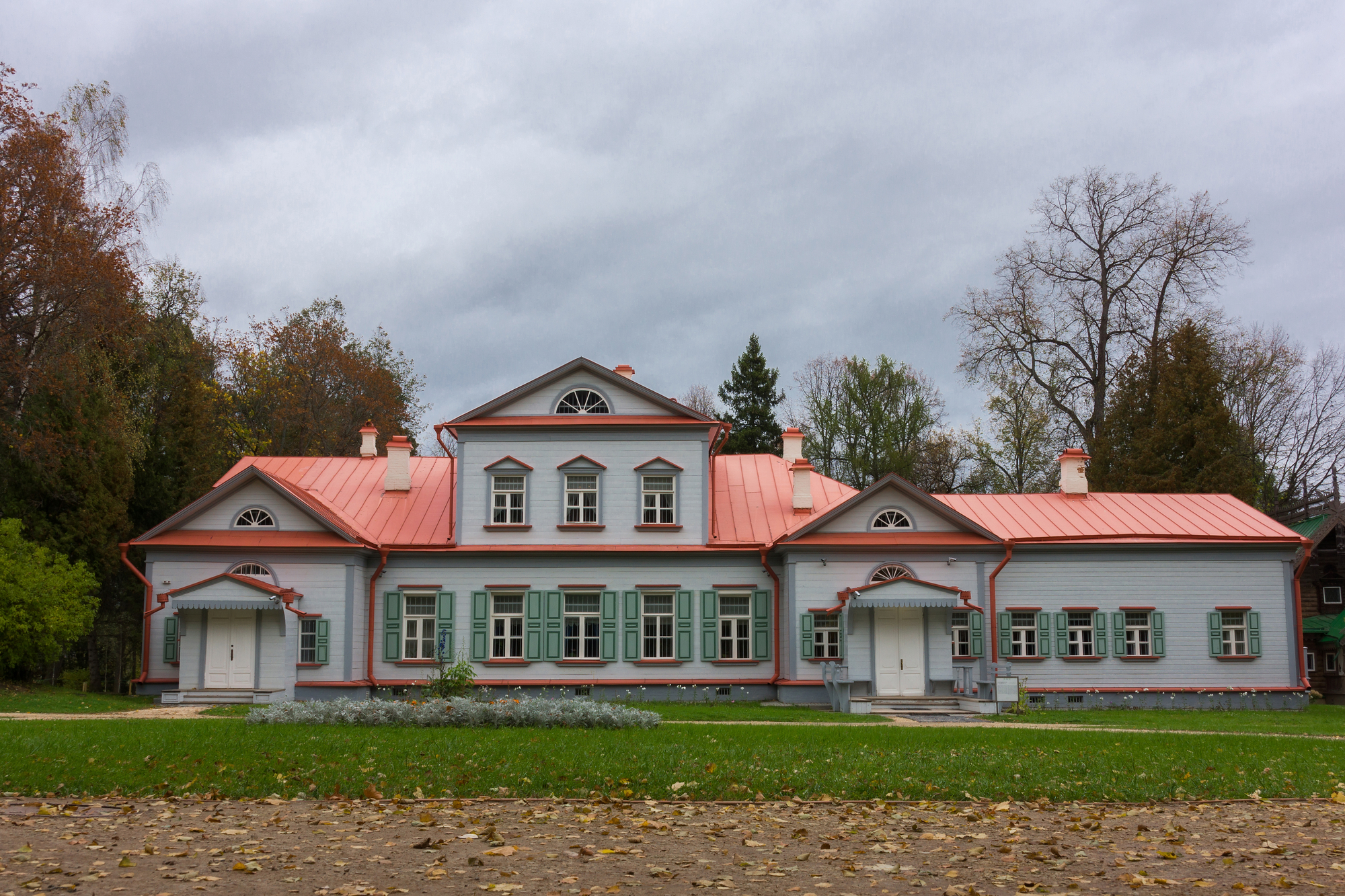
The Abramtsevo estate located between Moscow and Sergiev Posad was one of the most important centers of Russian cultural life in the second half of the XIX c.. In 1840s the owner of this country estate was writer Sergei Aksakov whose often guests were famous Russian authors Nikolai Gogol and Ivan Turgenev. In 1870 Abramtsevo was bought by the industrialist and patron of arts Savva Mamontov and estate became a place of creation and relaxation of many prominent Russian painters: Victor Vasnetsov, Mikhail Vrubel, Vassily Polenov, Valentin Serov. Here Savva Mamontov formed his private opera company. Fyodor Chaliapin and Konstantin Stanislavsky took part in the performances in Abramtsevo. The interiors of the local Church of the Savior (1881-1882) built in style of the XII c. Novgorod temple were designed by Victor Vasnetsov, Vassily Polenov, Ilya Repin. The fair-tale and epic ancient Russia was represented in the works of prominent masters of the Silver Age in Abramtsevo. The collection of fairy-tale ceramic characters as well as the stoves are displayed in the Artist’s Studio constructed in 1872. The interior of a towered bathroom conveys very well the aura of ancient Russian buildings. In the park there is a peasant’s log hut places on chicken’s legs built according to the sketches by Victor Vasnetsov as well as a multicolored majolica bench built according to the sketches of Mikhail Vrubel.
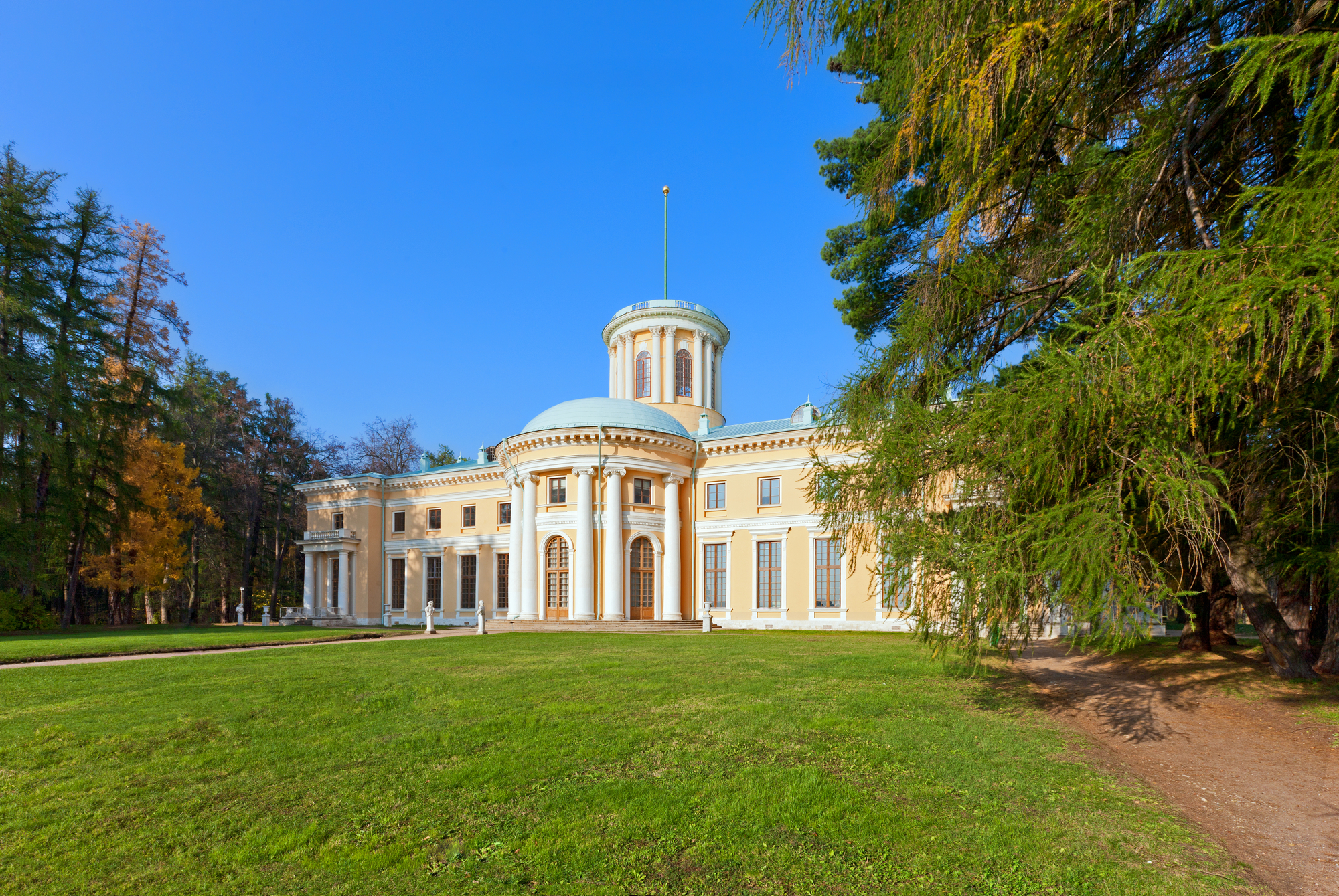
Arkhangelskoye is an actual pearl of the Moscow region, beautiful manor ensemble and interesting museum. At different times this estate belonged to the princely families of Odoyevsky, Golitsin and Yusupov. Magnificent palace was built in the classical style in 1780s-1790s. Its southern facade faces the regular park descending in terraces to the Moscow River oxbow lake. The last owner of the estate was Felix Yusupov known as an active participant of murder of Grigory Rasputin 17 December 1916. Pompous family shrine was built under him. Since the first years of Soviet power Arkhangelskoye estate belonged to the Ministry of Defense. Leon Trotsky liked this place very much. Previously Soviet generals lived just at the palace but then gigantic and luxurious sanatoria block was additionally built and the view from the Palace to the Moscow River oxbow lake was closed. In Soviet period such entry was written in the book of honored guests keeping since the XVIII century, “A wonderful Palace but how would it be decorated if its former owners were hanging from the trees around it…”
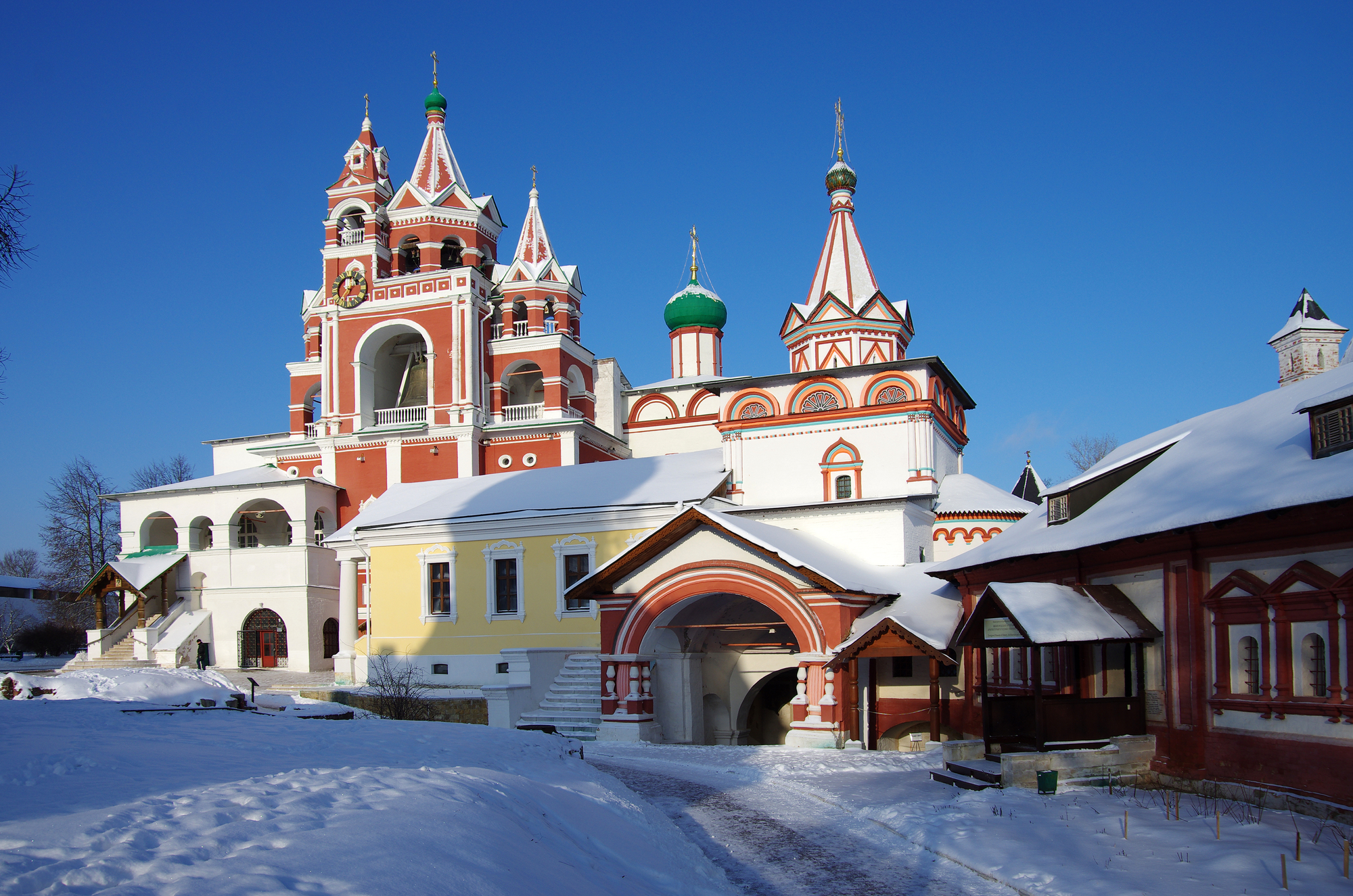
Zvenigorod is typical Russian provincial town with loghouses surrounded with gardens and kitchen-gardens, merchant houses with usual for Russia stone basement where they traded and kept goods and a log top where they lived, several stone buildings of government offices in the city center, market, city park. The main place of interest in Zvenigorod is the Savvino-Storozhevsky Monastery founded in 1398, one of the most honoured relics of the Russin Orthodox Church, great sample of Russian architecture with very rich history. Now you can see here wonderful architectural ensemble of the XVII century with intricate forms and abundance of decoration, a complexity of composition and picturesqueness of stone silhouettes. The next local place of interest is the Assumption Cathedral of the same period with paintings of the early XV century attributed to famous Russin icon painters Andrey Rublev and Daniil Chyorny.
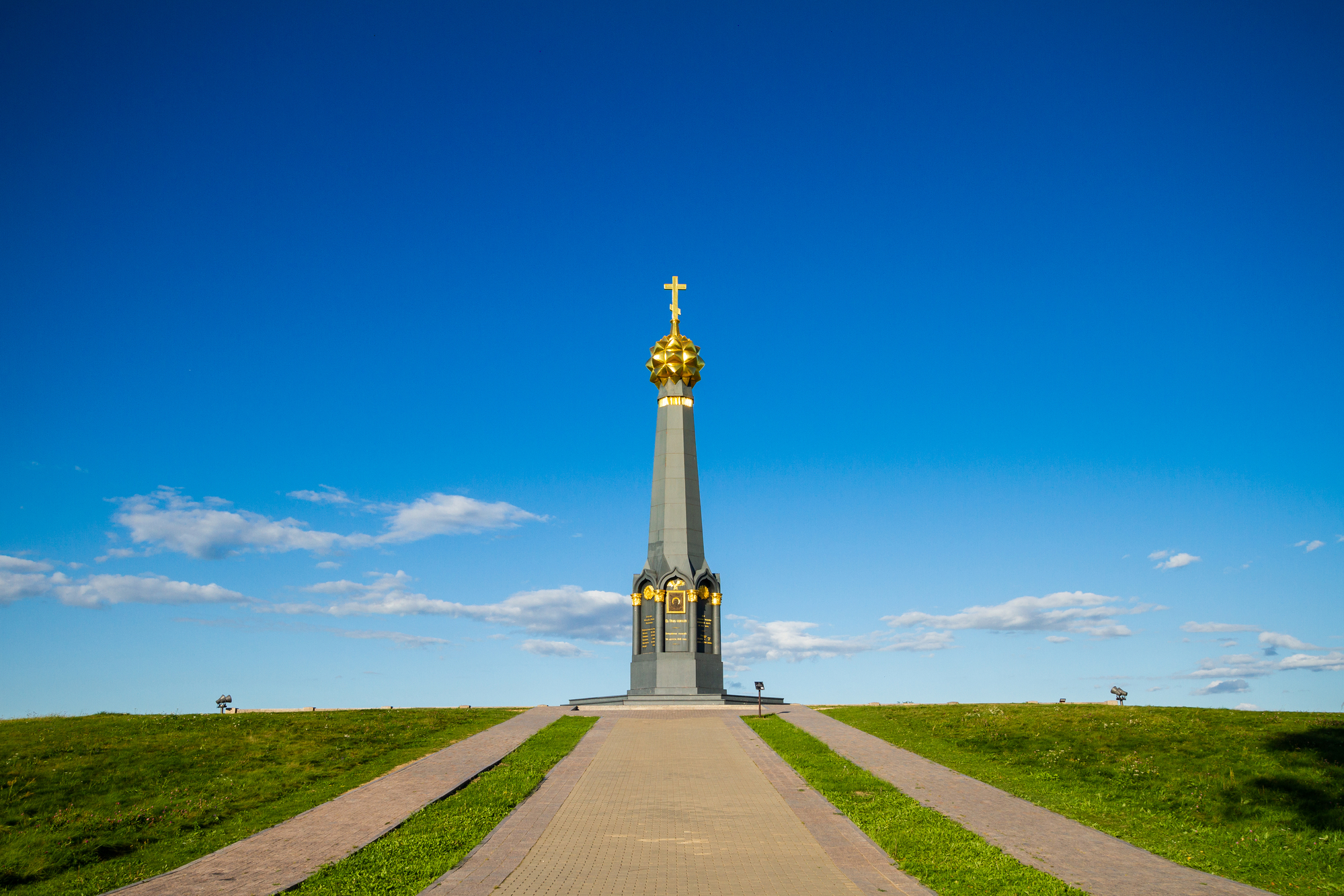
To the West of Moscow not far from Mozhaisk town the village of Borodino is located. This is the site of one of the largest battles in world history. On 7 September 1812 in Napoleonic Wars during the French invasion of Russia about 250 thousand people converged and more than a thousand guns thundered on the front about 5 km long. The battle lasted 15 hours. In the village of Gorki there is a monument on the hill where Russian field marshal Mikhail Kutuzov’s command post was located during the battle. The eagle looks across the field at another monument marking the site of Napoleon’s bid. Now the battle field is gigantic open-air the Borodino Battle Museum. There are about 40 military monuments there. The most of them were errected in 1912 for the 100 anniversary of the Battle of Borodino. Each monument is dedicated to a specific Russian regiment, division, corps and even company that took part in the battle. Monuments were errected by the same military units with funds collected by subscription. Monuments are different but number of all dead and injured men in the ranks and families of all officers is specified on each of them. This is not possible to reach all monuments by vehicle. Some of them are accessible only by footpaths.
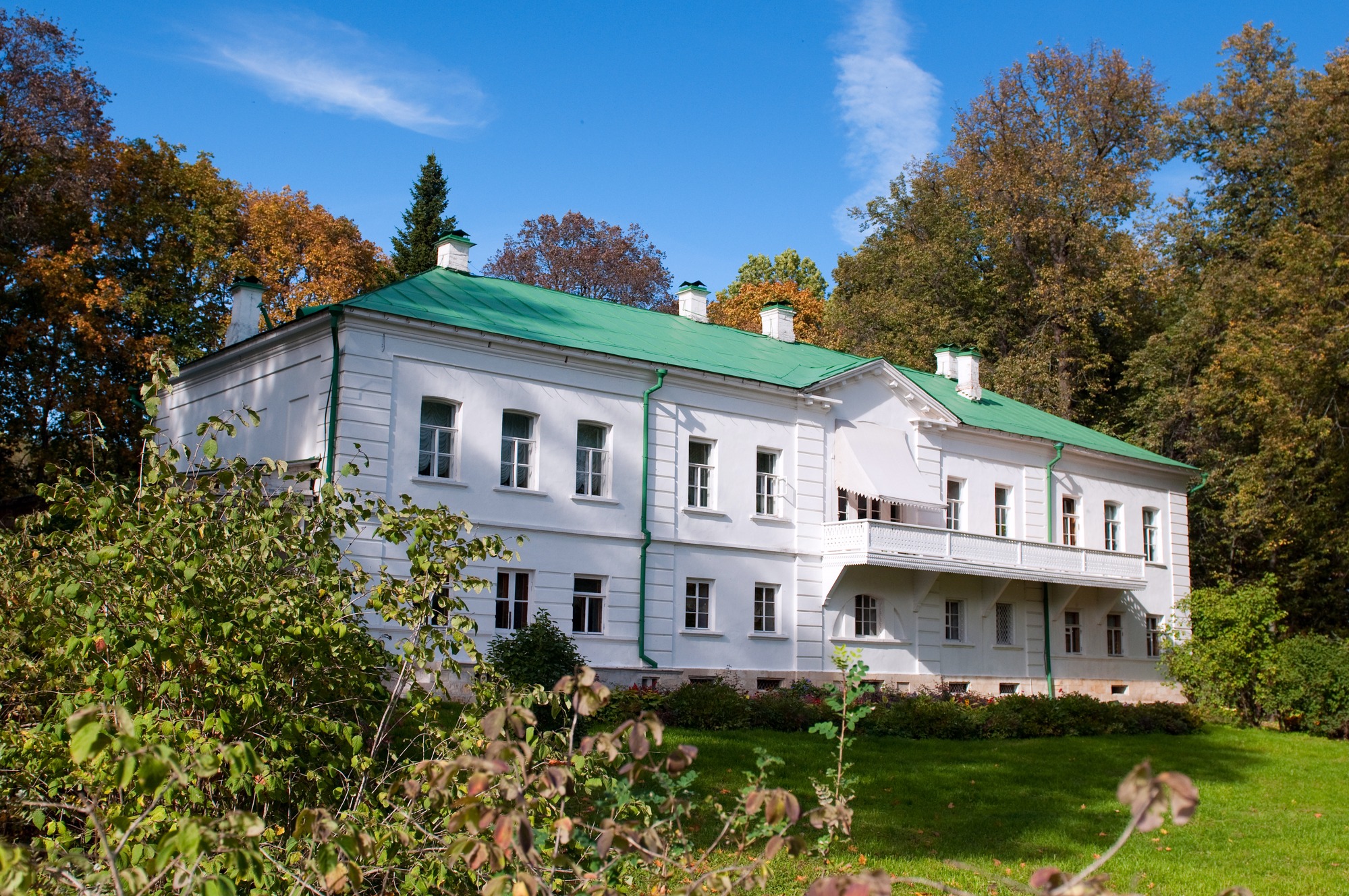
Yasnaya Polyana estate (206 km to the south of Moscow, the Tula Region) is the place where Leo Tolstoy was born in 1828 and lived about 60 years. Here Tolstoy wrote many of his books and philosophical essays (among them masterpieces “War and Peace”, “Anna Karenina”). At stormy night fall of 1910 he left his house in Yasnaya Polyana to look for a simple form of being and life. On his way he got ill and died in a very amall train station Astapovo but his grave is in Yasnaya Polyana. You can arrive in Yasnaya Polyana by train from Moscow and come back on the same day or overnight in Yasnaya Polyana at the hotel situated just near the estate.
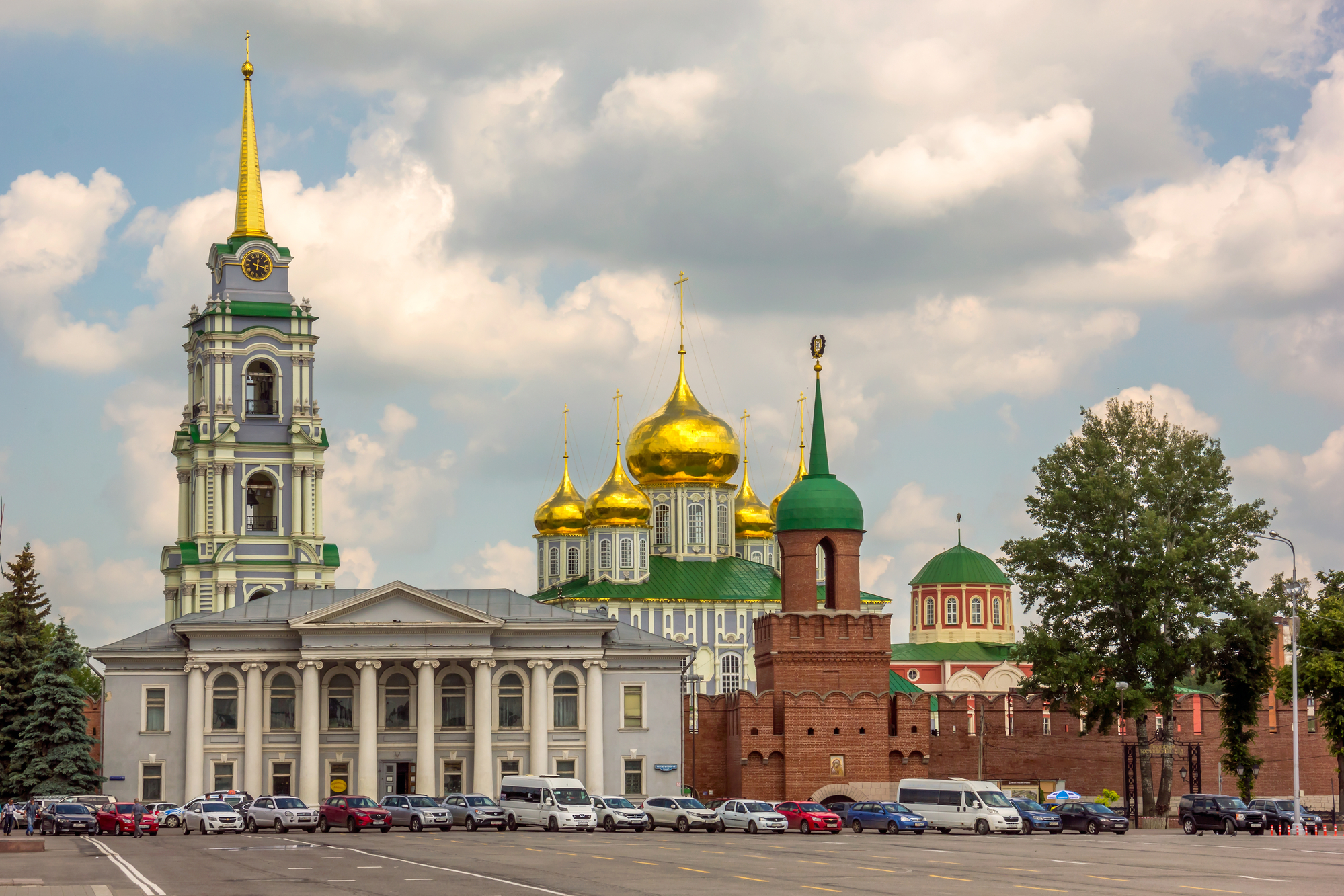
We recommend you to combine your Yasnaya Polyana tour with city of Tula visiting. Tula is old Russian city (160 km to the south of Moscow) with partially preserved constructions of the Kremlin built in the late XV century by the same team of Italian architects who already errected towers and walls of the Moscow Kremlin, traditional center of weapons production in Russia and the production of the famous Tula Pryanik (traditional sweet baked goods probably of the German origin popular in Russia, Belorussia, Ukraine and Poland). But the most popular branded production of Tula city is samovar (Russian traditional tea-urn). Russian proverb “To go to Tula with own samovar” is analogous to the English “To carry coals to Newcastle”. We are sure that visiting local Museum of Weapons, Museum of the Tula Pryanik and Museum of the Tula Samovar will be very interesting and informative for you.

The Optina Pustyn (250 km to the south-west of Moscow) is a monastery founded in the XIII century. Optina Pustyn became a place of pilgrimage not only for peasant wanderers but also for leading Russian cultural figures. The writers Leo Tolstoy, Nikolai Gogol, Feodor Dostoevsky, Ivan Turgenev and the philosopher Vladimir Solovyov received counsel from the Optina Pustyn elders. Feodor Dostoevsky discribed this monastery in his “Brothers Karamazov” novel.
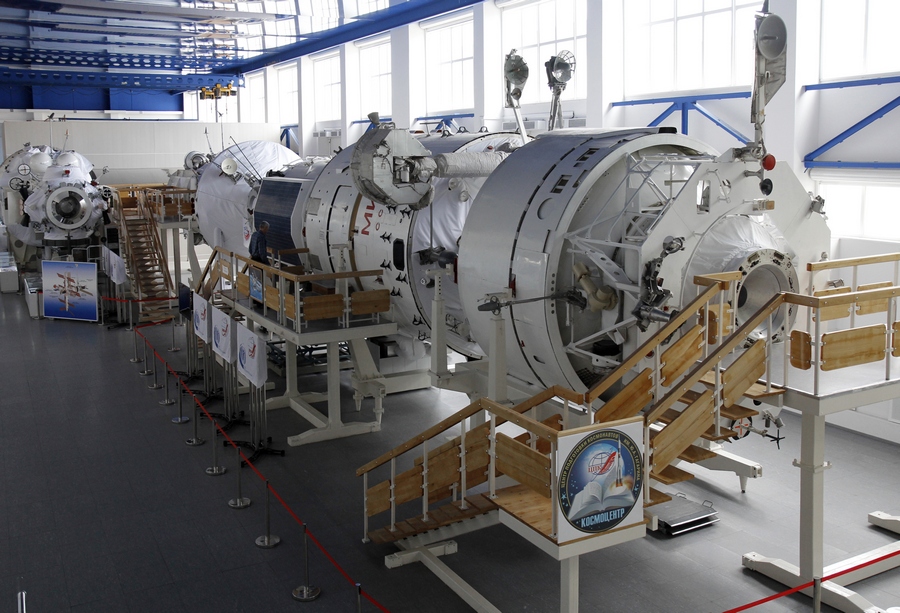
The Russian Cosmonaut Training Center (25 km to the east of Moscow) named after Yuri Gagarin who did the first manned flight to the space is famous all over the world. You will have a chance to visit a local museum and memorial office of Yuri Gagarin. During your visit to the special technical zone of the Center you will have the opportunity to see unique simulators, the centrifuge, the hydro-lab with models of space vihicles. In a huge swimming-pool there is a model of spece station. Water weightlessness enables cosmonauts to practice their skills necessary for their travelling into outer space.
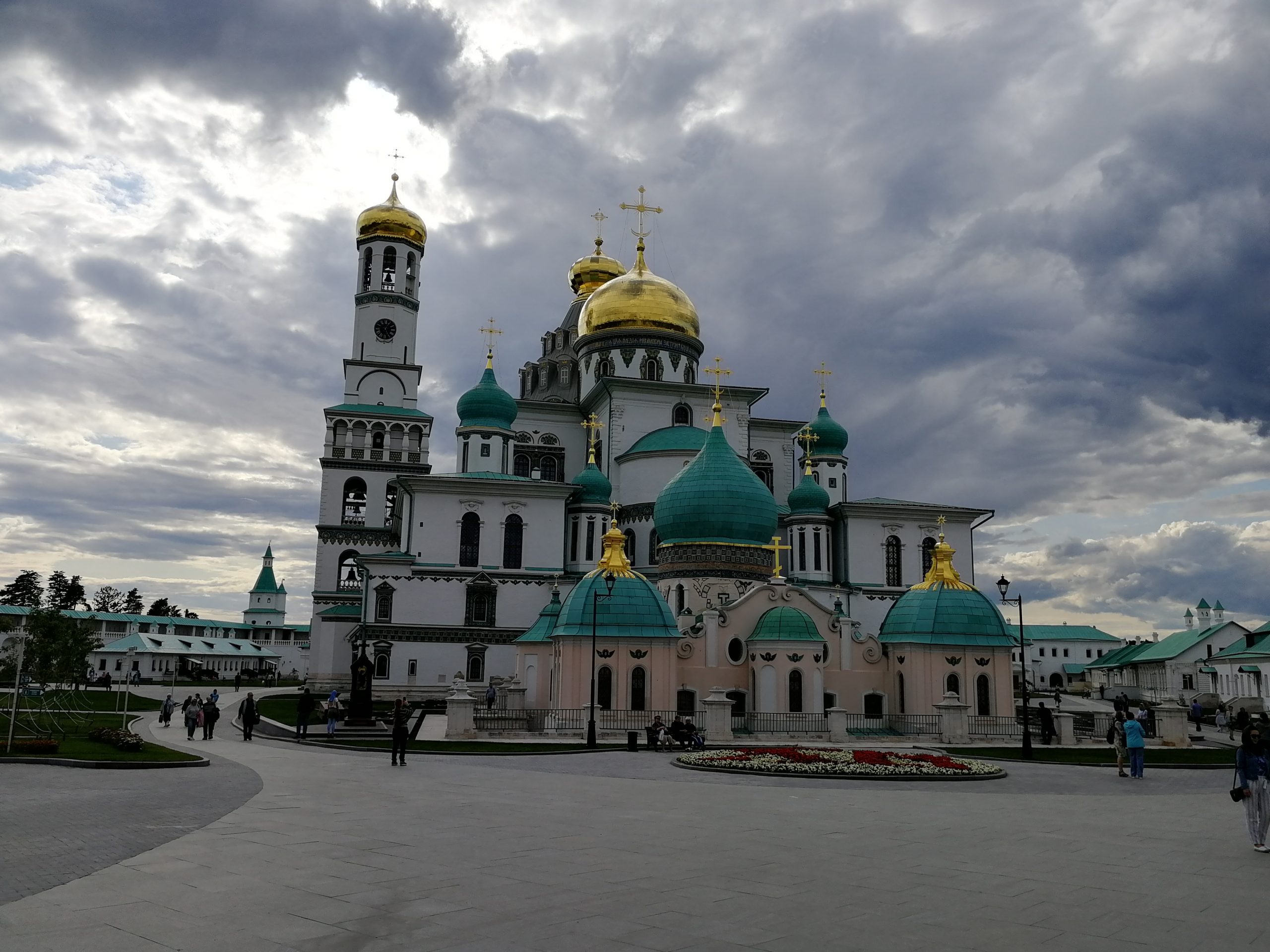
This city (60 km to the west of Moscow) burned to the ground by Germans in 1941 was built as a settlement around the Resurrection Monastery (New Jerusalem) founded in 1656 by Patriarch Nikon, the head of the Russian Orthodox Church. The Monastery became realized Nikon’s project to reconstruct Christian’s Holy Land including exact copy of the Holy Sepulchre Cathedral near Moscow, its topography and reliquiae. Palestine was actualy designed near Moscow as grandiose architectural and landscape complex. Together with the monastery it also comprises the grounds of forest park with springs, ponds and canals which adjoin the monastery hill from North and North-West and which is called as the Garden of Gethsemane. You will see the Resurrection Cathedral built “in the image” of the Holy Sepulchre Cathedral in Palestine, the main sanctuary of the Christian world. European architecture witnessed a lot of copies to this cathedral but not a single one tried to reproduce the whole building with such thoroughness and with such attention to detailes. The Resurrection Cathedral completely reproduces the dimensions, plan and volume and space structure of the Palestine original.
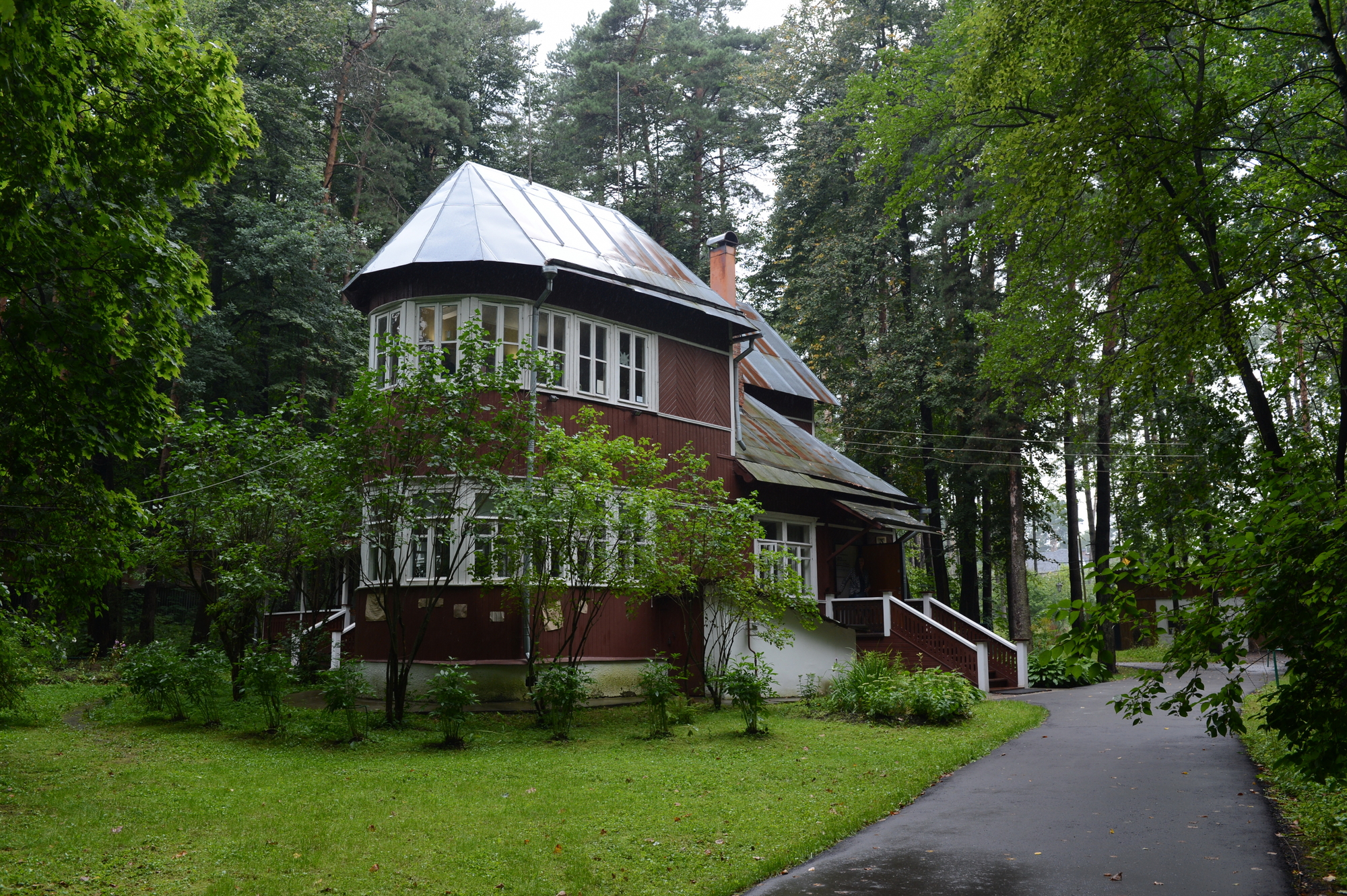
Peredelkino is dacha settlement with boarding house located not far to the west of Moscow. It was established in 1933 for Soviet writers. The Soviet government fixed a strict hierarchy for writers on edtions, on the release of a volume of selected works, a two-volume or more considerable collection of works. Dachas at the writer’s settlement and free permits to the boarding house were also distributed strictly by rank. Now some dachas are museums. You can visit here the House Museum of Boris Pasternak, Soviet Nobel Prize winner (1958) who survived severe persecution from the communist authorities for publication abroad of his forbidden in the USSR novel Doctor Zhivago.
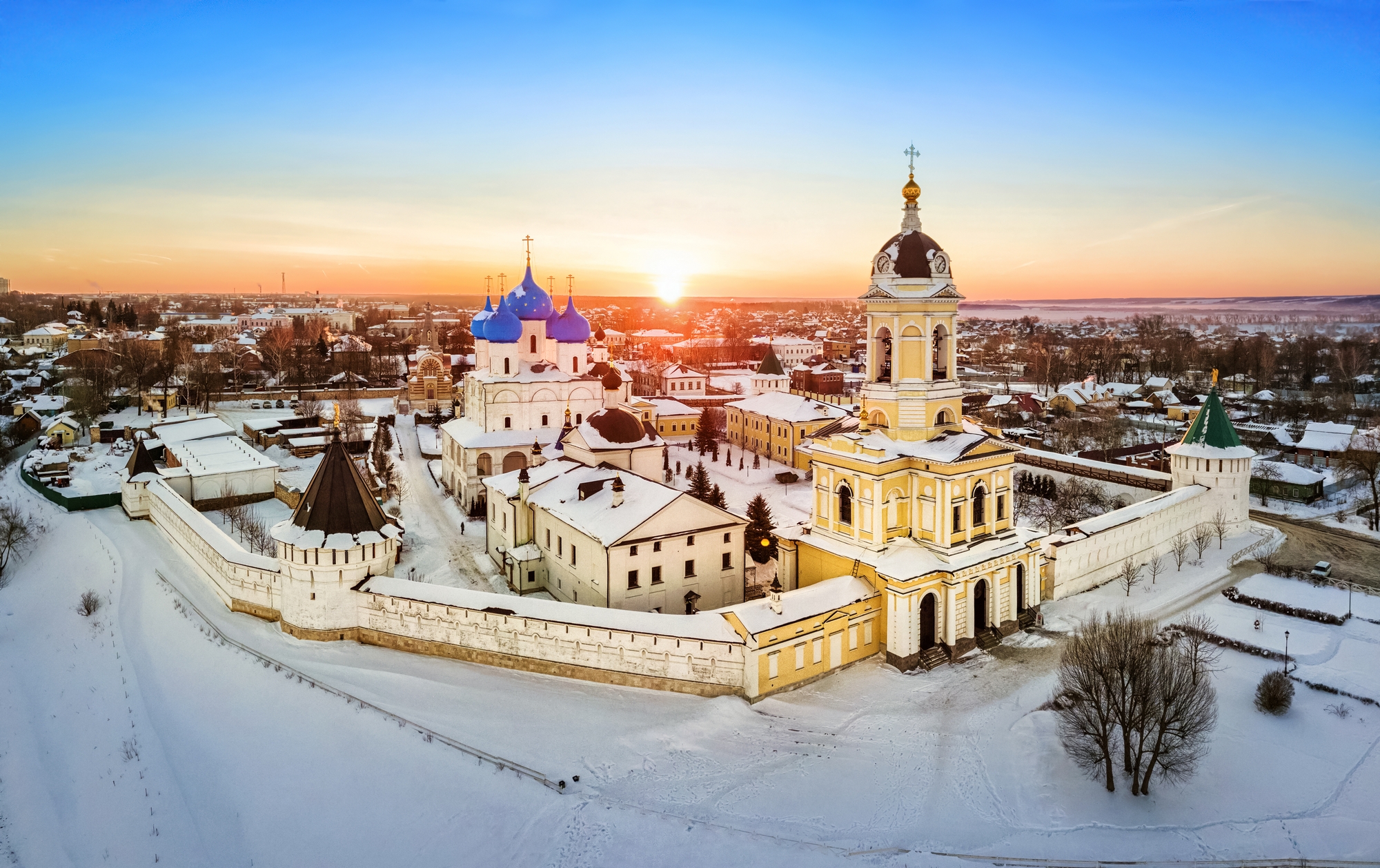
Serpukhov (99 km to the south of Moscow) was founded in early XIV century as fortress at the south border of the Moscow Principality. Now it is very nice provincial city with its own special atmosphere and rich history. Small houses and quiet streets create a sense of peace and tranquility. Churches, high bell towers of churches and monasteries, ramparts of the Kremlin, several buildings of the XVIII century surrounded by green gardens and colorful wooden houses create a wonderful panorama of the Russian provincial city.
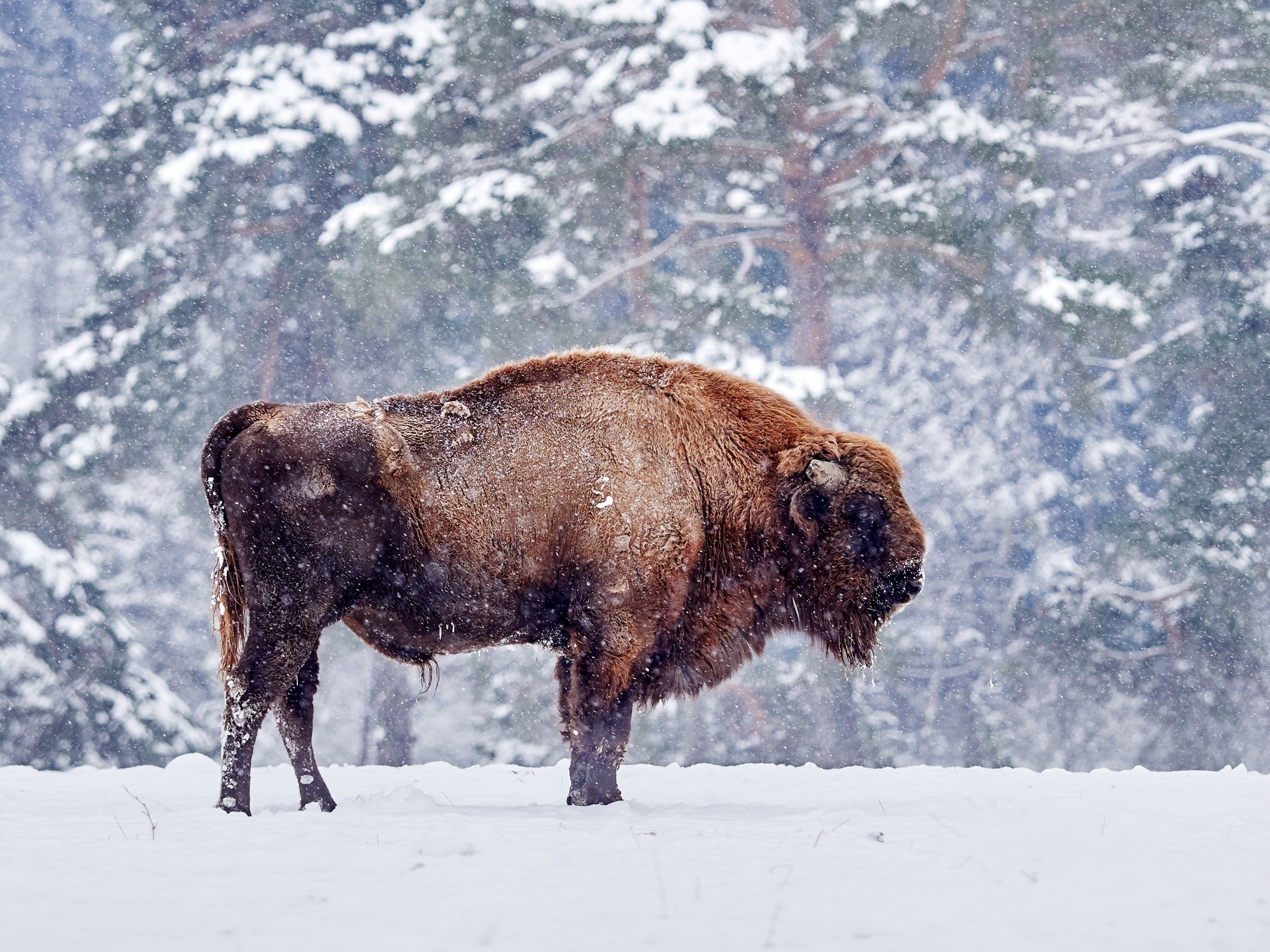
The Prioksko-Terrasny Nature Biosphere Reserve is located not far from city of Serpukhov. It is called the Terrasny (terraced) because natural areas represented at the Reserve are ledges (terraces) descenting down to the Oka River: from mossy spruce and pine forests in the Northern part to the unique for this latitude steppe flora at the dunes on bank of the Oka River. There are many rare animals and plants here. The pride of the Reserve is a large herd of European bisons, restored population of these almost extinct ancient (bisons lived at the same time as mammoths) animals.

The Gorki estate located to the south-east of Moscow, not far from the Domodedovo airport is a place where the founder of the Communist Party and the Soviet state Vladimir Lenin spent the last years of his life and died on 21 January 1924. The last architect of the estate was the famous Modern Style architect Franz Schechtel. In Moscow he designed the Yaroslavsky Railway station, Ryabushinsky’s house and Savva Morozov’s house at the Spiridonovka Str.. He also reconstructed for Savva Morozov the estate in Gorki and redeveloped the park. Now the Gorki manor park is included in the register of the best parks in Europe. The interior of the estate presents authentic items that are related not only to period of Lenin’s activities. That’s why the tour will be interesting both for those who want to learn the life of Lenin and for those who are interested in the life of an old Russian manor. Museum complex in Gorki includes several museums. In 1990s after the crash of Communist regime in Russia exposition of the Lenin’s Office and Apartment in the Kremlin Museum was moved to the Gorki estate. Here you will see a lot of personal belongings of Lenin and his family members, a beautiful library that includes more than 40,000 volumes. Undoubtedly it will be interesting to plunge into the atmosphere of the Lenin apartment in the Kremlin living rooms. Even in the kitchen, down to the smallest detail, the former furniture is recreated. The Museum of Peasant’s Mode of Life was arranged at the house where Lenin spoke at the gathering of the peasants in 1921.The exhibition presents furniture, utensils, tableware and agricultural equipment of that time. The Museum of Political History equipt with audio-visual complexes with slide films, three-dimensional pictures and elements of laser graphics presents documentary exposition dedicated to the political history of Russia at the early XX century and Lenin’s political activities.
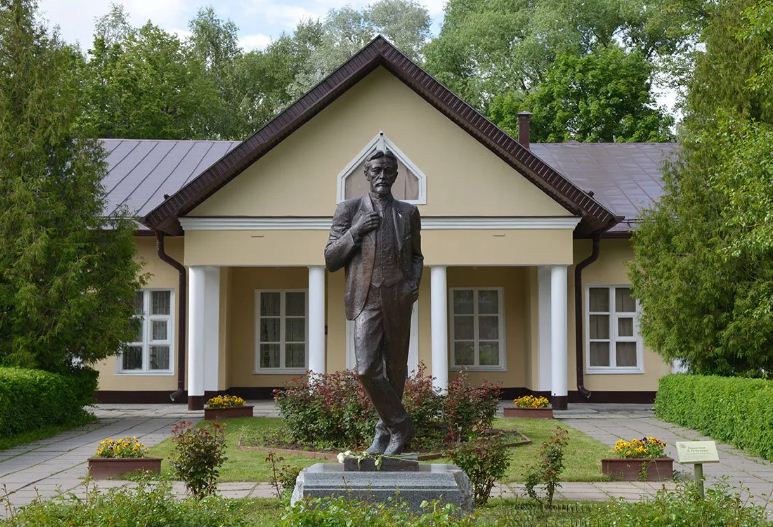
In 1892 Anton Chekhov bought from the theater artist Sorokin a dacha south of Moscow which was recently fancifully designed by him in the style of his own scenery and fantastic extravaganzas. Next to the house a lovely little guest wing built by Chekhov is situated. The writer liked this wing so much. Previously he just worked in it but soon moved here to live. When the writer came to Melikhovo a red flag appeared on the flagpole so that the peasants knew that they could come for advice and medical help. The writer’s house was always full of guests. Here he built schools and medical centers, treated patients in the neighborhood and organized a cholera quarantine station.
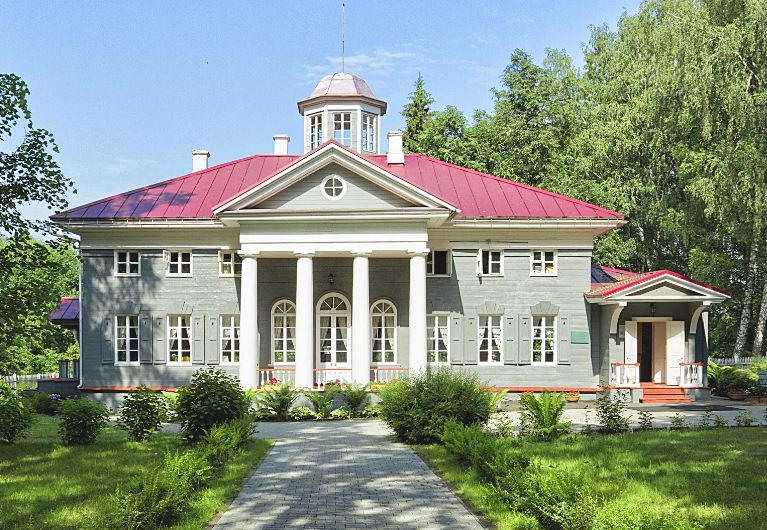
The estate of Zakharovo was purchased in 1804 by Maria Hannibal, the grandmother of the great Russian poet Alexander Pushkin. The Pushkin family lived here every summer until the departure of the young Sasha to study at the Tsarskoye Selo Lyceum. The next time Pushkin visited Zakharovo in 1830 before his marriage. Here he met with his peers — peasant children who had already become staid peasants. The manor house was destroyed in the early XX century and rebuilt in 1999 to mark the 200th anniversary of the poet’s birth. Now Alexander Pushkin Open-air Museum is organized on base of Zakharovo and the closest estate of Bolshiye Vyazyomy.
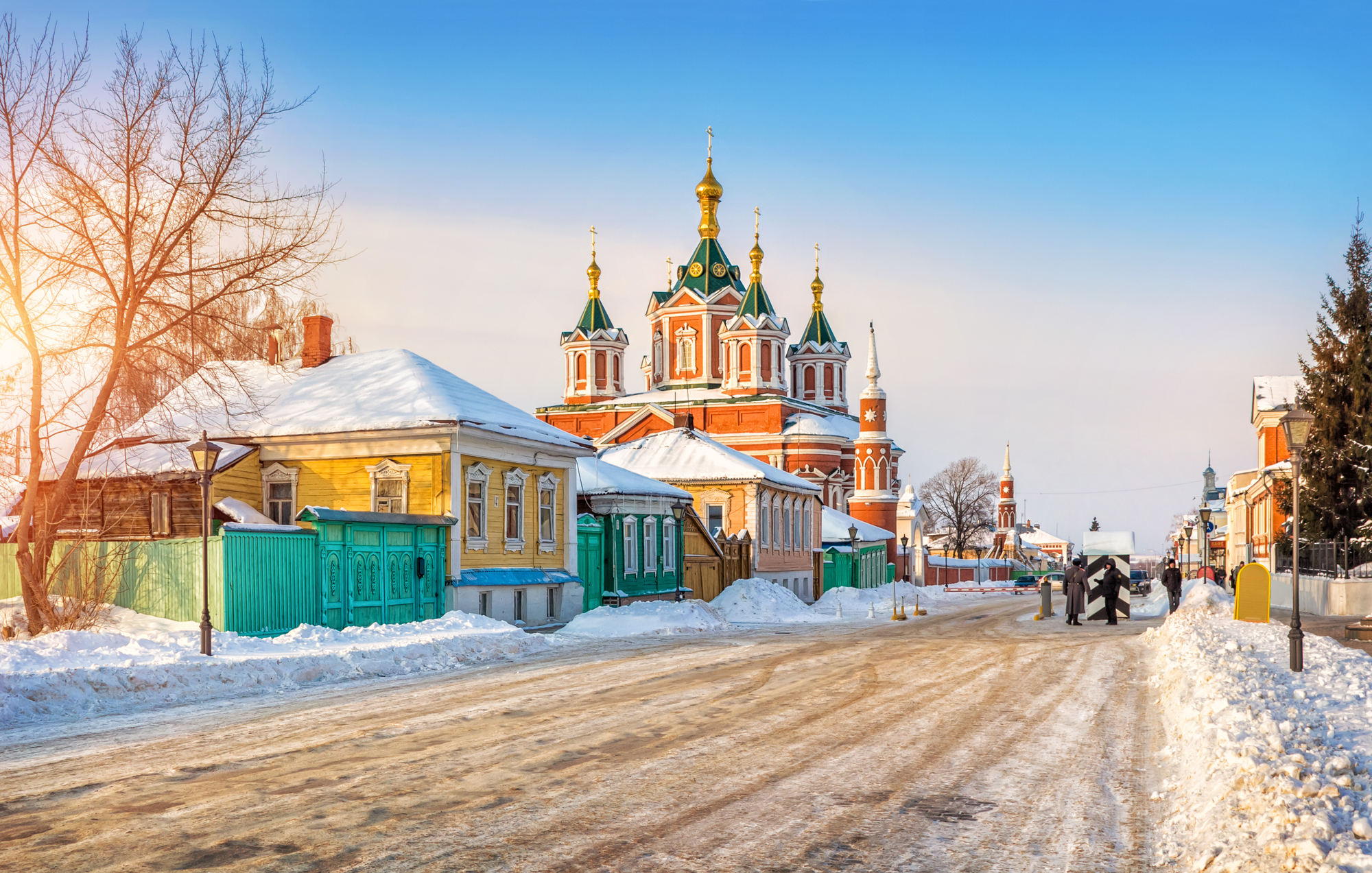
Kolomna (113 km to the south-east of Moscow) known since 1177 is one the oldest city of the Moscow Region. City was built on the high bank of the Moskva River in 5 km from its confluence with the Oka River. Kolomna is a actual open-air museum. In the center of the city stands the Kremlin built in the early XVI century. At that time it was the most powerful and nice fortress in the Moscow area. Its towers were not built up as in Moscow and now they can be seen in their original form. The Brusensky Assumption Convent, The New Golutvin Holy Trinity Convent, the Resurrection Church and other very nice churches are located on the Kremlin grounds. The silhouette of the city is dominated with the high multi-tiered bell tower of the St. John the Apostle Church which is part of the Shopping Arcades architectural ensemble. Further South you can see the elegant Church of the Ascension built in the late XVIII century by the greatest Russian architect of the Classicism Matvey Kazakov. It is difficult to list all the interesting temples and civil buildings in Kolomna. Just walk around this ancient city and enjoy its beauty.
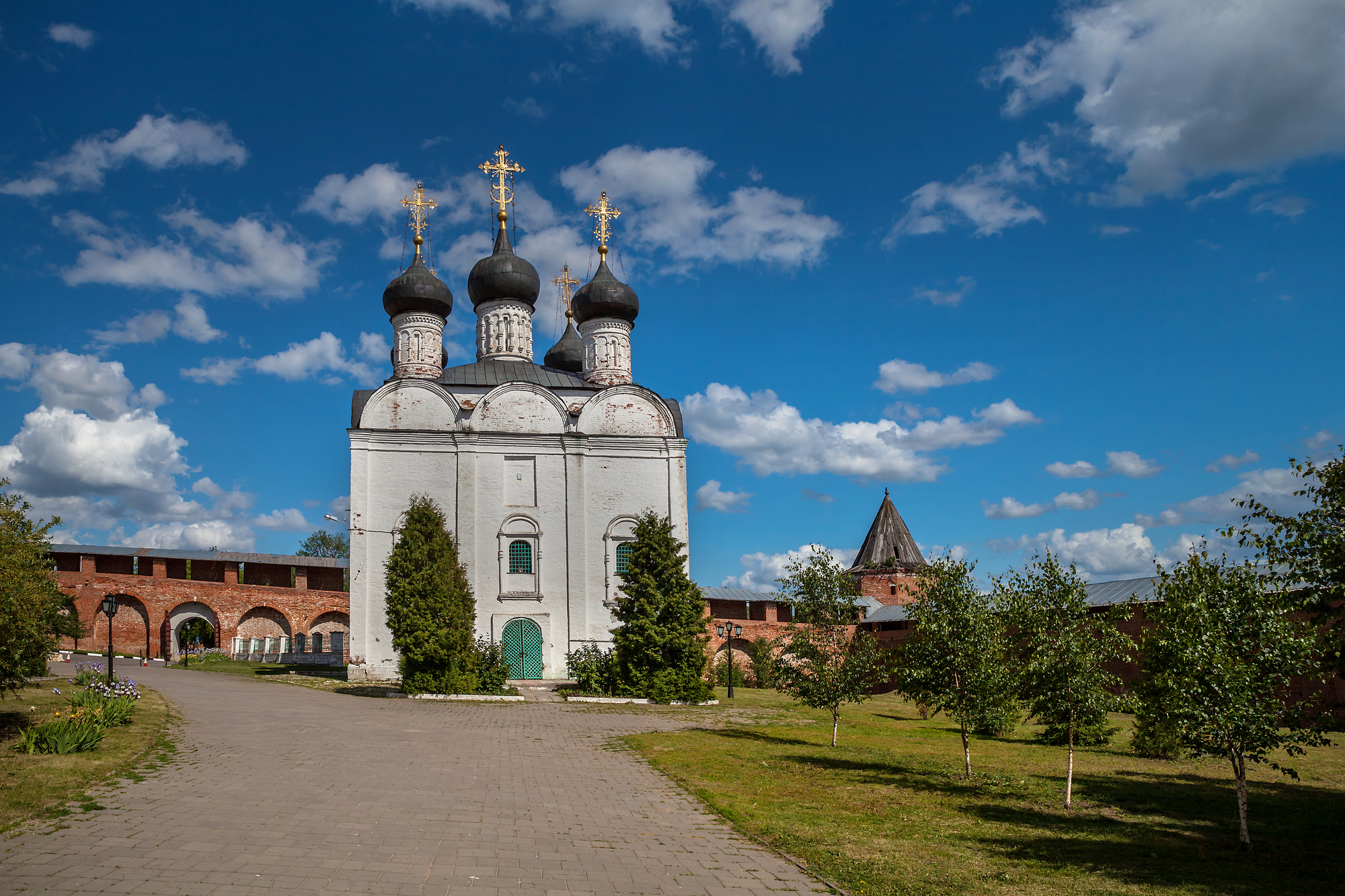
Zaraysk (162 km to the south-east of Moscow) is known since 1140 but it is not as rich in ancient monuments as nearly located Kolomna. The most ancient constructions of Zaraysk are the Krenlin (XVI century) and also the St. Nicholas Cathedral (XVII century) kept without any changes since the time of its building. The St. John the Baptist Church (1821), some churches of the XVIII-XIX centuries, traditional for Russian cities Shopping Arcades and the Water Tower are also interesting. As the result of the enemy invasions and of the neglect in the Soviet period the most part of architectural monuments in Zaraysk has been lost but the city is beautifully spread out on the hills on of the Osyotr (Sturgeon) River high bank, from everywhere through the streets you can see spacious distances and the whole city is cozy and friendly.

Dmitrov (65 km to the north of Moscow) was founded in 1154 as powerful fortress. Its huge earthen rampart has been preserved to this day. The majestic Assumption Cathedral of the early XVI century stands in the historical center of the city. We recommend you to climb the rampart from the South side. It offers a beautiful view of the old buildings. Both in the historical center and outside of it some streets of the city have preserved the characteristic appearance of the XIX century practically unchanged and make up a kind of spontaneous architectural ensemble. Walking along the streets between the ramparts and the Boris and Gleb Monastery you will plunge into the urban environment of the XIX century. Perhaps the most characteristic street of the old city area stretching behind the rampart is the Kropotkinskaya Str.. The famous revolutionary anarchist Prince Peter Kropotkin spent the last years of his life (1918-1921) there. A geographer and researcher of the of the earth’s ice sheets dynamics, he became interested in the ideas of anarchism. During his living in Dmitrov he contributed to the creation of the Dmitrov Museum of Local Lore. Now in his house small Kropotkin Museum dedicated to the famous revolutionary and his ideas is arranged, and the city has become a place of attraction for followers of anarchism.
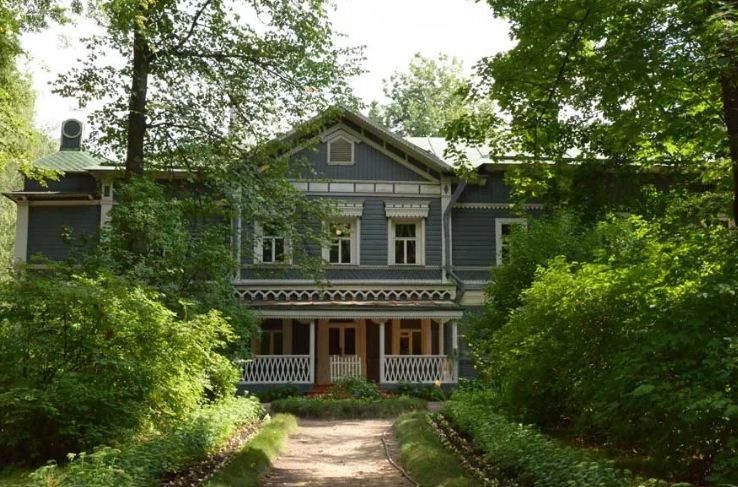
Ancient Russian city of Klin (89 km to the North of Moscow) is known since 1234. In the city center you can see ramparts of the former Kremlin. Soon city of Klin lost his military importance and became trade and craft center and also very important post station. The Post Station of the late XVIII century is kept here. Just after the bridge through the Sestra (Sister) River you can see some typical buildings of the late XVIII – early XIX centuries: the Post Office yard, hotel, the Mayor’s House, the Treasury and the Police. Behind them there are two churches: the Assumption Church (midlde XVI century) and the Resurrection Church with belfry, local replica of the Moscow Baroque (1712). Writers Aleksandr Radishchev and Leo Tolstoy, the painters Vassily Perov and Ilya Repin, composers Mily Balakirev and Sergei Taneyev visited Klin. Dmitry Mendeleev made a balloon flight here. But first of all Klin is known as place where Pyotr Tchaikovsky lived and created two last years of his life (1892-1894). Here Cherevichki (the Little Choes), The Enchantress, Iolanta operas, The Nutcracer, The Sleeping Beauty ballets, Manfred Symphony, Symphonies No. 5 and No. 6 were composed, The Queen of Spades opera was completed. The Tchaikovsky House-Museum includes a memorial house of Pyotr Tchaikovsky, a manor park and buildings on its grounds, outhouse with exhibition dedicated to Tchaikovsky’s favorite student Sergei Taneyev.

Kaluga (157 km to the south-west of Moscow) is known since in 1371. Just since its founding Kaluga became the object of struggle between the Moscow and the Lithuanian princes. The Lithuanian princes believed that Kaluga was unfairly «taken from them by Moscow». This was the reason for the first written mention of Kaluga which is contained in a letter from the Lithuanian Prince Algirdas to the Patriarch of Constantinople Philotheus dated 1371. Since the late XIX century Kaluga is a quiet provincial city. A lot of architectural monuments of several epochs have been preserved in the historical center of the city: merchant Korobov’s stone chambers (XVII century), St. Georgy Cathedral (1700-1701), Government Office (1780-1809), Holy Trinity Cathedral (1786-1819), Shopping Arcades (1782-1796), Zolotaryov’s – Kologrivov’s house (1805), Assembly of the Nobility Building (1850). There is good Fine Arts Museum in Kaluga where very interesting collection of the Russian painting is exhibited. Konstantin Tsiolkovsly House Museum is dedicated to the Russian outstanding cosmonautics theorist who lived and worked in Kaluga in 1892-1935. There is a tradition that all Russian cosmonauts visit this Museum after finish a space flight as a sign of gratitude to this humble school teacher who opened the way to space for the whole world. In 1967 the State Museum of the History of Cosmonautics was opened in Kaluga. This the first in the world and the largest in Russia Museum was created with the direct participation of Sergei Korolev, Yuri Gagarin and other Soviet cosmonauts.
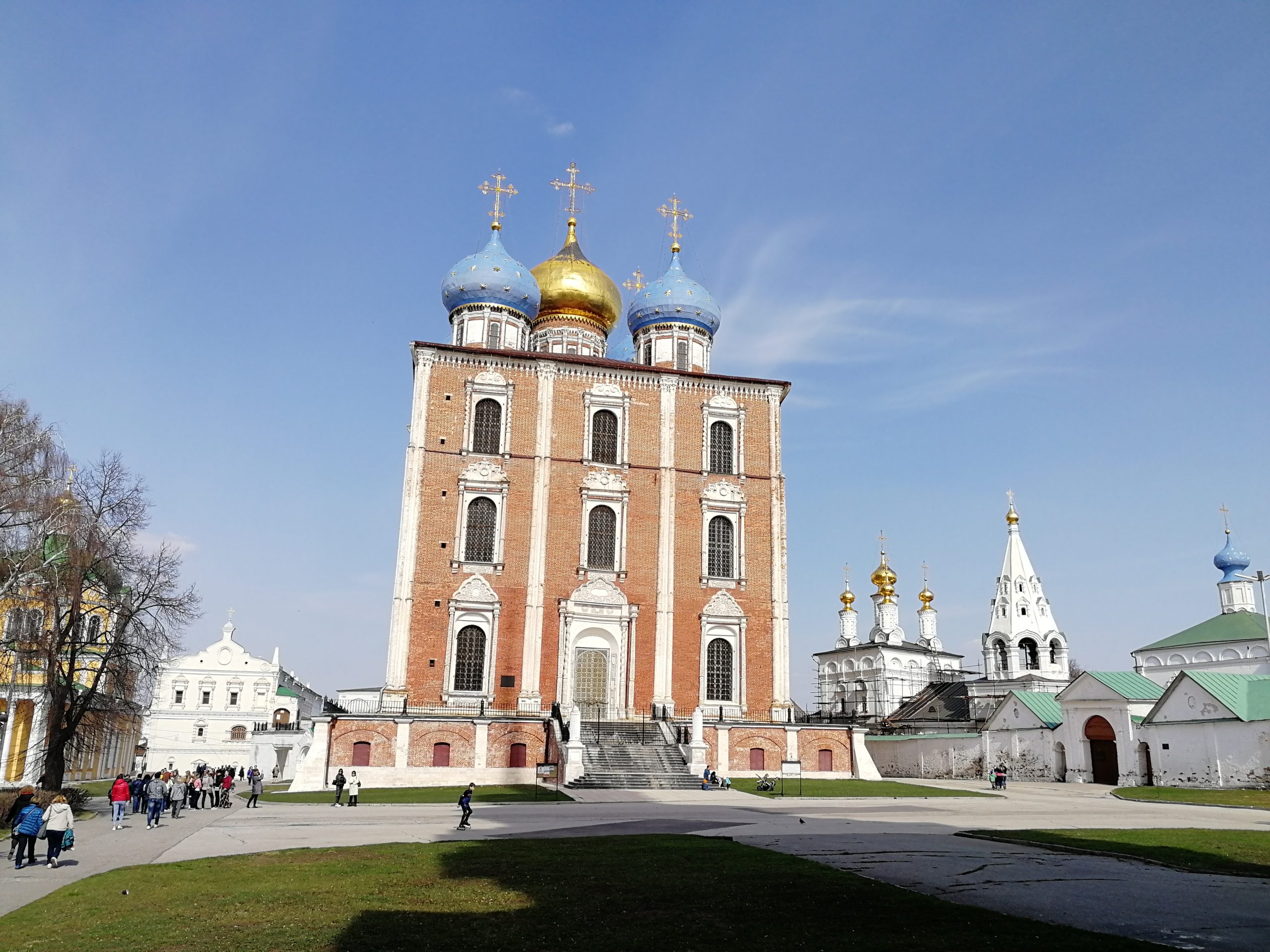
Known since 1095 city of Ryazan (175 km to the south-east of Moscow) was a center of strong and influential independent principality resisting attempts of Moscow to establish its hegemony in North-Eastern Russia during very long time. Now Ryazan is a regional administrative center but in many ways it retains the charm of a quiet provincial city. On the local Kremlin grounds there is a lot of both ancient Russian architecture and classicism architecture monuments. The main pedestrian street of the city (local Arbat) is the Pochtovaya (Postal) Str.. In the evenings it turns into a tunnel with lighting where street musicians perform and cafes and restaurants welcome guests. The Sobornaya (Cathedral) and the Astrakhan Streets have preserved the atmosphere of old Ryazan to this day. There are many old merchant mansions here. In one of such houses there was a modest perfume shop of the Polish Jew Maksymilian Faktorowicz who became world-famous Max Factor later. Other popular sites for leisurely walks are the Lybed Blvd. with buildinds in contemporary European style and interesting art objects, the Trubezh River Emb. with unusual monument to outstanding Russian poet Sergei Yesenin, the Lower City Park where you can see a monument to “mushrooms with eyes”, the main “brand” of Ryazan in Russia. Visiting several very intersting museums is recommended. The Ivan Pavlov Museum is arrange at the house where great physiologist, the first Russian Nobel prize winner Ivan Pavlov spent his childhood and youth. At the Museum you can can learn a lot of interesting things about his life and scientific work. Very good collection is presented at the Fine Arts Museum. Guests of the Lollipop Museum can get acquainted with the history of old delicacy — Ryazan Lollipop, once highly appreciated by the Russian Imperial family representatives. If you came in Ryazan you can’t ignor the Sergei Yesenin Open-air Museum. The Museum is located on picturesque bank of the Oka River at old Russian village of Konstantinovo where great Russian poet who reflected in his work the tragic for Russia revolutionary era with its unrestrained hopes and bitter disappointments was born. The Yesenin’s Rus, its «country of birch calico» is located exactly here.